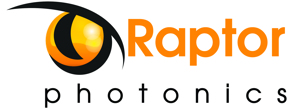Raptor Photonics Limited
Willowbank Business Park
Larne, Co. Antrim, BT40 2SF
+44 (0)2828 270 141
Larne, Co. Antrim, BT40 2SF
+44 (0)2828 270 141

Company Overview
Raptor Photonics Limited is a global leader and manufacturer of high performance, industrial-grade and extremely rugged ultra-low light digital and analogue cameras.
